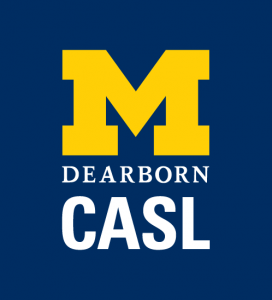

True to her statistician roots, she’s crunching the numbers to help make her choice. Right now, as temperatures in Michigan hover around 0 degrees, that includes analyzing weather trends.
“In statistics courses, you spend a lot of time analyzing data. Once you have that mindset, you can use it anywhere,” said White, who is minoring in statistics. “I’ve become a more discerning consumer and observer due to my stats minor.”
University of Michigan-Dearborn students like White now have the opportunity to dive further into the applications of statistics. The College of Arts, Sciences, and Letters' (CASL) Department of Mathematics and Statistics will introduce a new undergraduate degree program in applied statistics starting this fall. The program expands on the department’s long-running minor.
Department Chair Jennifer Zhao said the university launched the program in response to increased student and industry demand.
“We gather so much data now, and there’s a need for all of that data to be processed and analyzed,” Zhao said. “Our research shows the job market for statisticians will grow another 40 percent through 2020, particularly in market research and ‘big data’ analysis, and in the medical and pharmaceutical industries.”
The program requires 24 credit hours of content at the 300- and 400-level and will prepare students to solve complex real-world statistical problems in a range of industries, according to CASL Associate Dean Michael Lachance.
“Applied statistics programs give students the practical tools and skills they need to be successful in the workforce,” he said.
Lachance said the degree works as a stand-alone major, but also complements a number of campus-wide programs—programs including engineering and the physical sciences, public health, health and social sciences, and economics.
“I always encourage my students to be double majors. Really, they can choose any other major they want,” he said. “If you have that statistics base, you can help any other discipline; you can help almost any other enterprise where people want to keep track of stuff.”
White said the discipline’s flexibility was part of the draw for her.
“I have a wide range of interests, so the diversity of the applications of statistics really appeals to me,” she said. “I think it’s really amazing how statistics can be used to determine things as simple as, ‘Does tapping a pop can reduce fizz?’ to ‘Is a medication an effective treatment for a particular disease?’”
Visit UM-Dearborn’s Department of Mathematics and Statistics webpage to learn more about the new bachelor’s degree in applied statistics.





